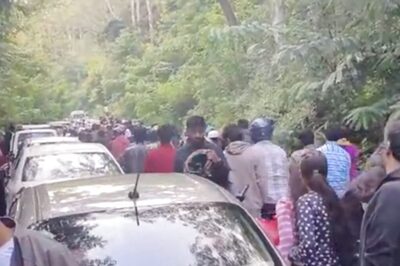
views
BATON ROUGE, La.: Conditions after Hurricane Ida last summer killed about 280 million fish in inland waters about 40% more than died in Louisiana waters after Hurricane Andrew in 1992, the state Department of Wildlife and Fisheries estimated Thursday.
Catchable fish are usually scarce for about a year in areas which had big fish kills, but populations rebound, the department said in a news release.
Most of those from Ida are in an area where the storm was moving slowly before it left the state, said Robby Maxwell, whose job as inland fisheries technical adviser includes being that division’s fish kill coordinator.
Hurricane Laura, which slammed into southwest Louisiana on Aug. 27, 2020, was the same magnitude as Ida but moved much faster and left a very different pattern, he noted.
Instead of concentrated fish kills, they were scattered over 9 million acres, he said. That’s about 14,000 square miles or 36,400 square kilometers.
Most of the fish died within a week of Idas Aug. 29 landfall, in an area covering about 2,800 square miles (7,200 square kilometers), the department said.
It said 19 of 20 big fish kills were in areas where hurricane-force winds roared through.
The kills are caused by low oxygen levels after tropical storm winds and storm surge churn up sediment and dump in debris, which uses oxygen as it decomposes.
There’s no way to get an exact number of fish killed, the department emphasized. It said the estimate was based on factors including wetland maps, the known extent of fish kills, historic sampling, and expert opinion about kills’ severity.
Wildlife and Fisheries logged information from staff observation, public phone calls and social media posts about 20 fish kills throughout southeast Louisiana.
One near Gibson at the southwestern edge of its map was the only one where winds were less than 74 mph (119 kph), Maxwell said.
At the northern end, there was only one significantly above I-12, on a tributary of the Tangipahoa River, he said.
Maxwell said Lake Maurepas drainages east and southeast of Baton Rouge had extensive kills, and there also were some reported around Houma and east to the Mississippi River, including New Orleans’ west bank but not the city’s east bank or Lake Pontchartrain, its northern boundary.
In the months after a fish kill, surviving fish spread out into areas where they now have little predation or competition for increased nutrients. The following spring, they will spawn with extremely high success rates, the department said.
Disclaimer: This post has been auto-published from an agency feed without any modifications to the text and has not been reviewed by an editor
Read all the Latest News here




















Comments
0 comment